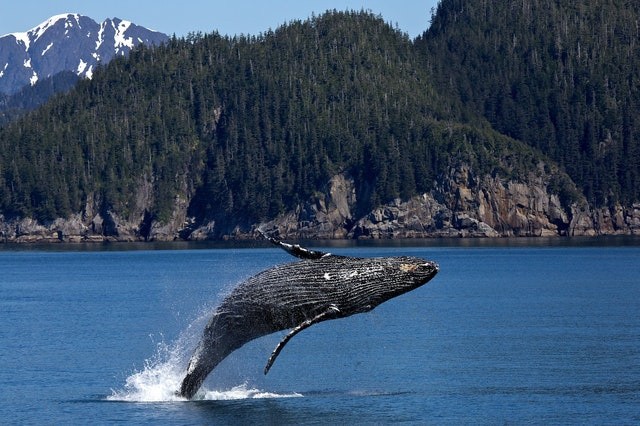Some large whale species including fin, humpback, and minke whales make use of the waters off New Jersey and New York as an additional feeding area preying on two different types of animal species, new study finds.

New York Bight (NYB)
Their outcomes were published in the journal Marine Biology Research and the team of scientists from Columbia University and the Wildlife Conservation Society (WCS) describes the New York Bight (NYB) as a crucial supplemental feeding location for a number of whale species gobbling locally profuse prey fish.
New York Bight is the region of water from Montauk Point, New York to Cape May, New Jersey. The scientists studied humpback or Megaptera novaeangliae; fin or Balaenoptera physalus; minke or Balaenoptera acutorostrata from their boat surveys, all these are three species of baleen whales.
They discovered that large, mixed-species groups usually including humpback, fin, minke, common dolphins (Delphinus delphis), and different seabirds come together in certain regions mid-shelf - 6.2-37.2 miles from shore - so they can consume schools of sand lance (Ammodytes spp.) which is a slime species of baitfish.
Also Read: WATCH: Secret Feeding Habits of Whales in Antartica Revealed
Prevalence of Foraging Behavior
In nearshore waters below 6.2 miles from shore, whales were all over the place and they mostly feed on schools of a bigger, oily species called Atlantic menhaden (Brevoortia tyrannus).
Using the New York Bight as a feeding region for some of these whale populations may be developing with time as unusual and underway climate-driven shifts in ocean currents, temperatures, and salinity in the Northwest Atlantic drive shifts in whale distribution within other recorded feeding locations in close regions.
One of the co-lead authors of the study, Carissa King of WCS's Ocean Giants Program Said: "There is a lot of excitement about seeing whales in the waters off New York, and we often don't get to highlight what they are doing here. Considering the high prevalence of foraging behavior documented in the study, it is more likely that changing prey availability and/or oceanographic conditions have led to some recent shifts in whale distribution and greater habitat utilization in coastal waters of the New York Bight."

Vessel Strike
The main behavior recorded was foraging, though traveling, resting, and socializing behaviors were also noticed. Instances of competitive group behavior for fin and humpback whales and also behaviors that are usually connected with breeding areas were noticed.
Whales were frequently seen eating around shipping lanes and in regions that have a lot of recreational boating activity, the team noted. The possibility for vessel strikes is of particular concern which is one of the major causes of injury or death of whale species along the U.S. East Coast.
When the study was ongoing, several humpback and fin whales were observed with proof of a former vessel strike including boat propeller injuries that are healing or are already healed, missing dorsal fin, or missing part of its tail.
Related Article : WATCH RARE FOOTAGE: This Is How the Blue Whale, World's Biggest Animal, Munches on Its Prey
For more news, updates about whales and similar topics don't forget to follow Nature World News!
© 2025 NatureWorldNews.com All rights reserved. Do not reproduce without permission.





